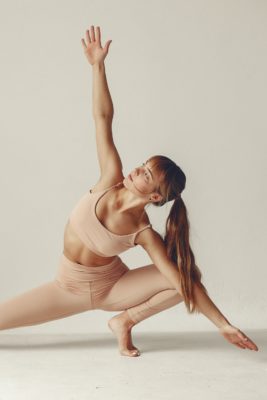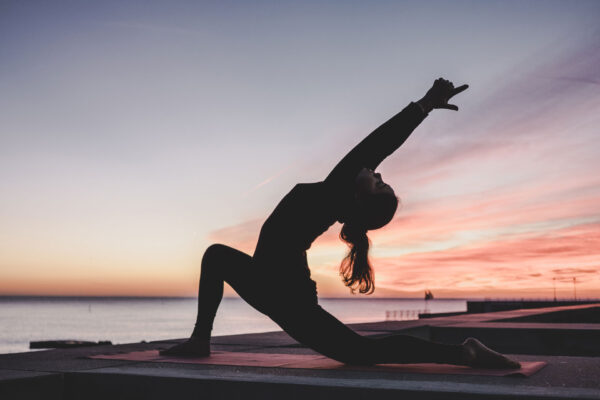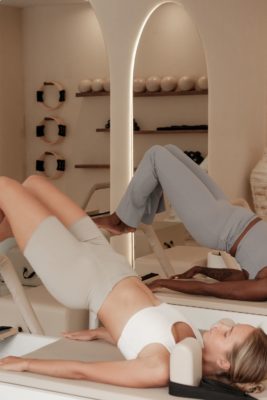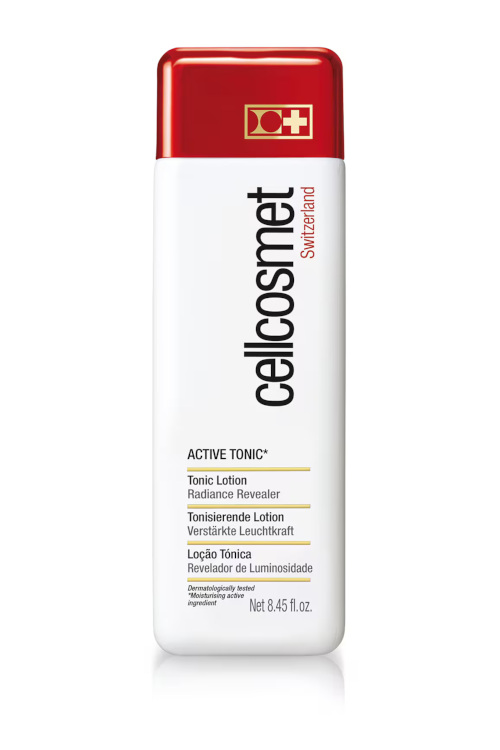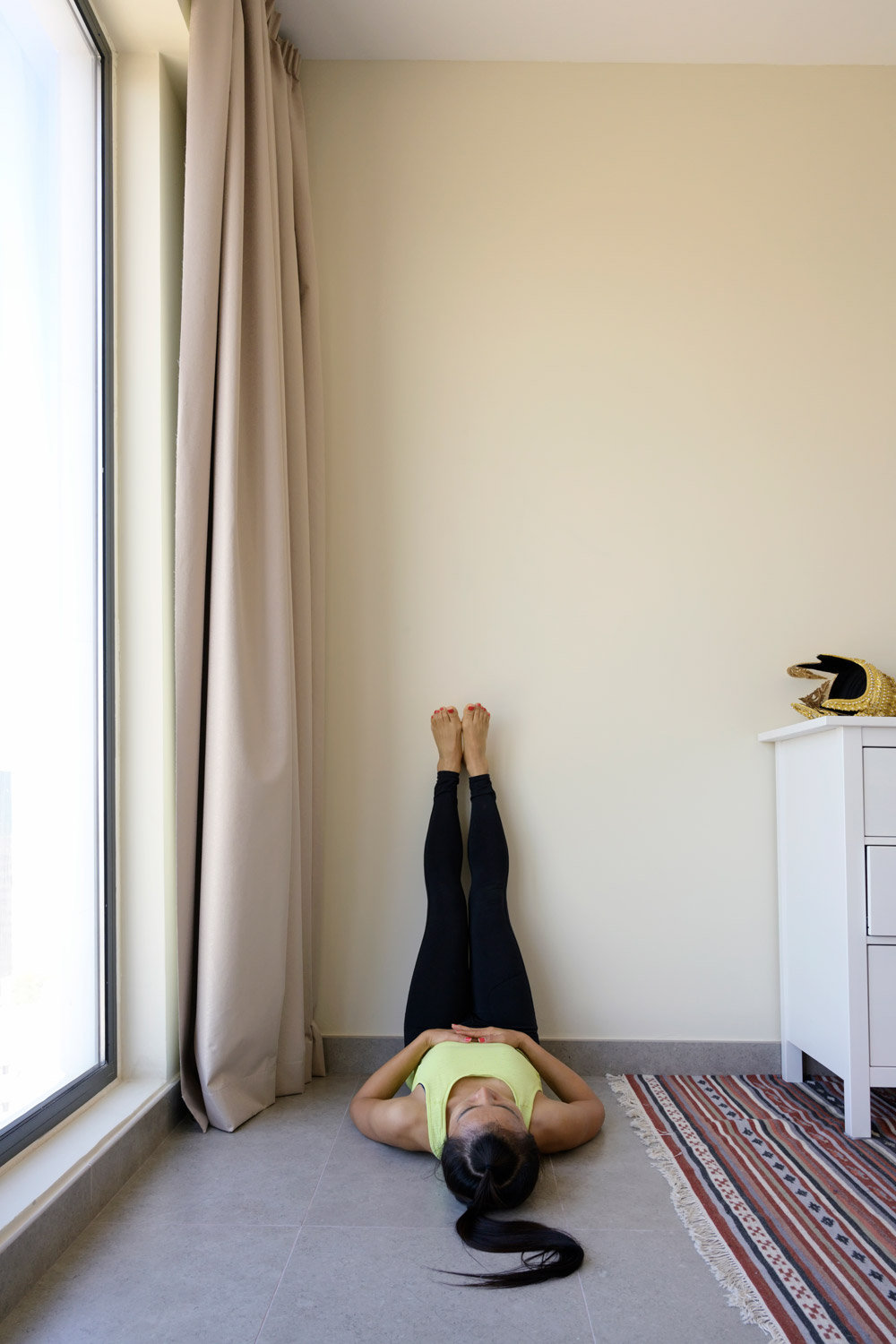
ELDOA: Could This Fitness Technique Cure Your Back Pain?
By
4 months ago
Upgrade your Pilates with these targeted joint exercises
Back pain is one of the most common ailments of the modern day – and it’s on the up. According to a recent report from the British Chiropractic Association, nearly 73 percent of Brits are struggling with back pain on a daily basis, while some scientists have described it as a ‘public health epidemic’. So it’s no surprise there’s growing interest surrounding a technique known as ELDOA: a series of postural exercises designed to improve spine and joint health.
What Is ELDOA?
ELDOA stands for Étirements Longitudinaux avec Decoaptation Osteo-Articulaire, which translates to Longitudinal Osteo-Articular De-coaptation Stretching. The method was developed by the late French osteopath Dr Guy Voyer over 40 years ago, but it’s currently gaining traction in places like California and Milan, where you can sign up to full ELDOA classes.
Here in the UK, it remains relatively niche, but Pilates teacher Paola Langella, founder of Shapes Studio and qualified ELDOA instructor, is keen to shout about its benefits.
She describes it as, ‘postural exercises that you can perform on your own for the purpose of increasing the space between two parts of a joint.’ Precise, targeted postures are generally performed either sitting down, lying, kneeling or on all fours, and held for 60 seconds (although you can start with less and gradually increase the time).
The T6-7, for instance, involves sitting cross-legged, and aligning your body so your head, torso and pelvis are in a straight line, then reaching the arms overhead and pressing your knees towards the floor. The L5-S1, meanwhile, involves lying down and placing your legs on the wall.
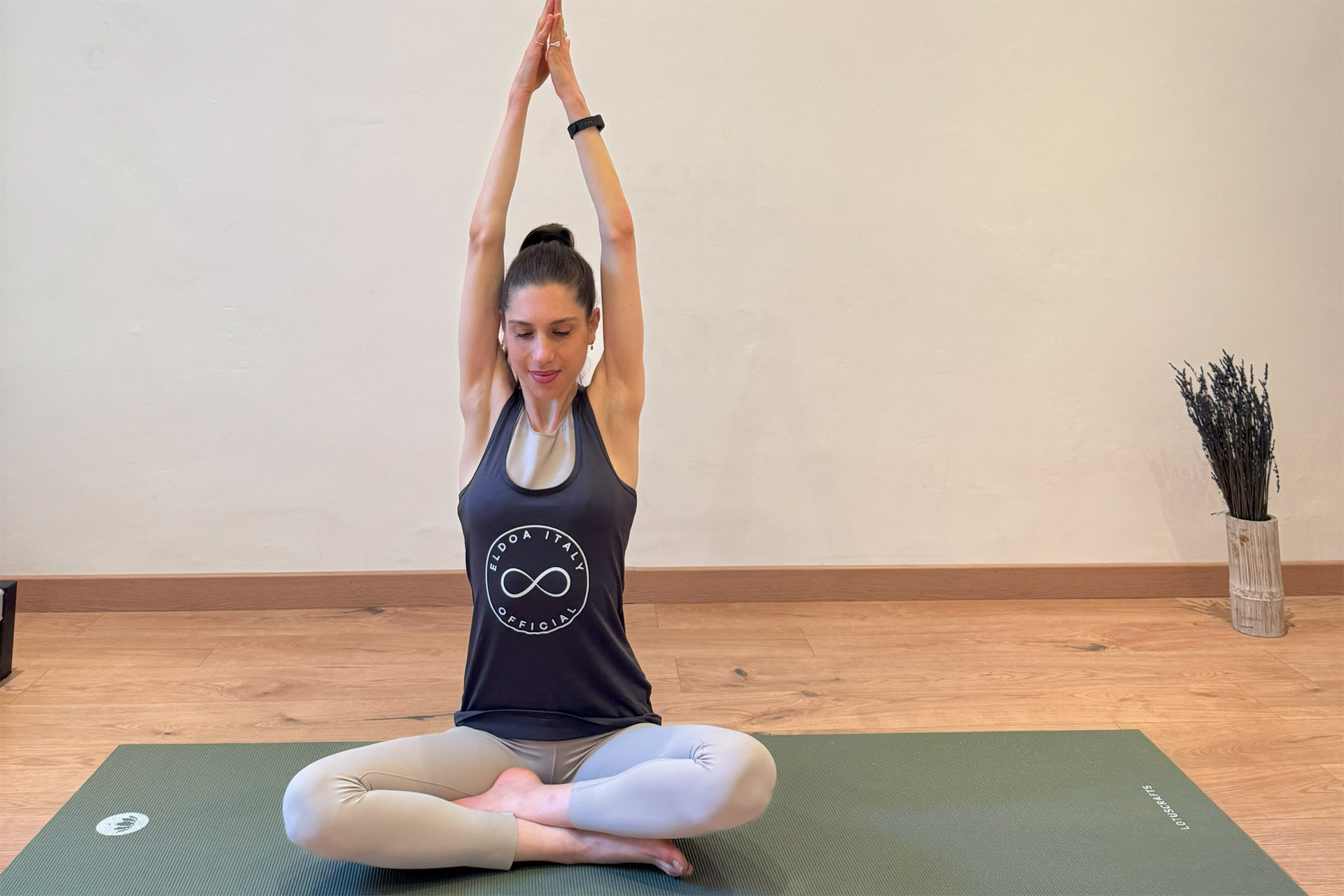
Paola Langella doing an ELDOA exercise
What Are The Benefits?
This method is primarily designed to improve the health of your spine and joints, and is particularly useful for people suffering with back pain. ‘Compressions and joint blockages can cause pain, arthritis, and neurological pathologies,’ explains Paola. ‘ELDOA exercises are a highly effective solution to all of these conditions.’ Postures are specifically designed to create space, which leads to ‘an improvement in the mechanics of the joint, increasing blood flow, reducing pressure on the disc and reducing pain.’
Stronger joint function not only reduces aches and pains, it’s crucial for overall health, allowing you to move more freely and efficiently. And, like all types of exercise, there are mental perks too: as Paola puts it, ELDOA ‘creates a feeling of wellbeing and awareness of the whole body.’
Other benefits include:
- Supporting organ and gland function
- Improving muscle tone
- Preventing injury
- Improving digestion
- Improving flexibility
- Reducing neck and shoulder tension
Although the research is still limited, a few scientific studies have indicated positive effects. In 2023, for instance, research published in Medicine (Baltimore) concluded that the ELDOA method is effective in treating neck pain and functional disability, proving superior to another technique known as post-facilitation stretching.
Who Should Do ELDOA?
ELDOA can offer benefits to everyone, but people suffering with injuries may find it particularly useful. Paola – a former dancer – has noticed improvements herself, having suffered with spinal problems since an accident during a performance left her with two slipped discs.
It can also be beneficial for athletes and people who run regularly, as the exercises help prevent and recover from injuries, as well as enhancing performance.
How Can People Get Started?
Paola recommends starting by incorporating one or two exercises at the end of their exercise routine (doing them as a warm-up is not recommended). She has shared videos of the exercises on her Instagram page, and incorporates them into her online Pilates classes.
View this post on Instagram
Meanwhile, the official ELDOA website offers online memberships, which give you access to an online video library as well as live practice sessions. As the exercises are very specific, it can help to book in for a one-on-one session with a trained instructor – you can find the full directory here. And, as with all exercise, it’s important to listen to your body, and stop if you feel any pain.
Exercises To Try
Paola has shared a couple of exercises you can try at home.
L5-S1
- Lie down and place your legs against the wall, with the sit bones against the wall.
- Allow hip internal rotation and ensure the big toes do not touch.
- Push the tailbone down towards the mat, and ensure the entire back remains flat on the mat.
- If hamstrings are tight, relax the legs slightly.
- Keep eyes open, looking toward the knees.
- Arms should be in in external rotation, with biceps near the ears, wrists in extension.
- Breathe naturally – inhale and exhale without holding your breath.
- From this position, extend the arms forward as much as possible without lifting the spine off the mat. Imagine pushing the heels toward the ceiling, and the arms in the opposite direction, creating the space between the vertebrae of the whole spine. Everything should be active.
- Hold this position for 60 seconds, starting gradually with 20-30 seconds, then working up to 60 seconds.
T6-T7
This ELDOA is beneficial for everyone, especially those who work at desks, on computers, or with phones.
- Sit cross-legged with sit bones on the floor.
- Keep the spine long.
- Place the fingertips of your hands in contact, elbows open to the sides, arms extended to the maximum range.
- Look down towards a point at least a metre away.
- Push the arms upward as much as possible without moving the body or lifting the sit bones.
- Keep the rib cage closed.
- Breathe smoothly through the nose; with each exhale, try to push a little more.







